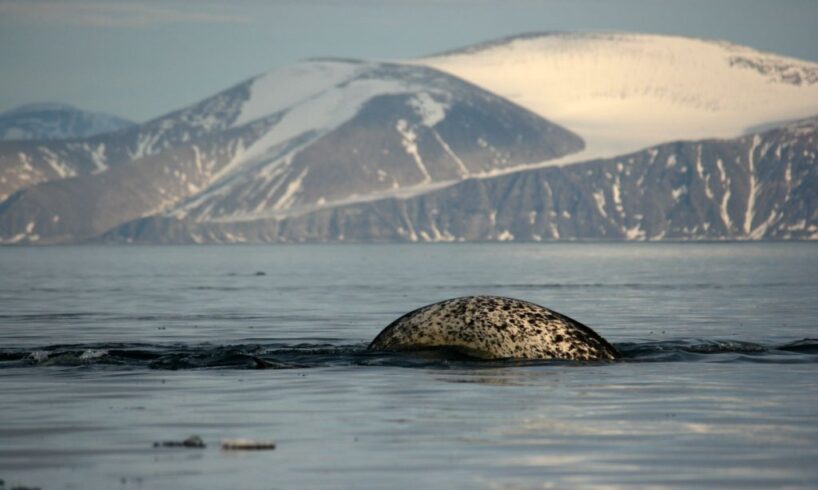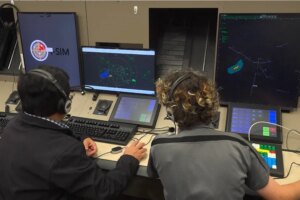
Building a strong conservation economy for Inuit is at the heart of a landmark $270-million agreement that is now being implemented in the Qikiqtani region of Nunavut.
Launched in Iqaluit on Nov. 13, the 10-year SINAA agreement is a partnership between the Qikiqtani Inuit Association, the Government of Canada and philanthropic partners including the Pew Charitable Trusts and the Aajuraq Conservation Society.
The federal government has committed $200 million in funding for this agreement, while the remaining $70 million will be provided by philanthropic donors. That money will see the creation of new jobs, infrastructure and training opportunities within the conservation field, including support for Nauttiqsuqtiit Guardians and conservation centres.
SINAA, which means “the floe edge” or “the place where land, ice and sea meet” was signed in February by former prime minister Justin Trudeau and Qikiqtani Inuit Association president Olayuk Akesuk. It follows years of consultation with Inuit in all 13 communities that are part of the Qikiqtani region, which stretches from Sanikiluaq, on an island in southern Hudson Bay, to Grise Fiord in the High Arctic.
The agreement covers 989,879 square kilometres of Qikiqtani land and waters and may help Canada meet its larger climate targets: Through the creation of new marine protected and conserved areas, SINAA will contribute almost four per cent to the country’s goal of protecting 30 per cent of land and oceans by 2030. As well, it adds to the area of Canada’s marine territory that will be under Inuit governance and stewardship, bringing the total proportion of Canadian oceans under Inuit-led protection to 12.3 per cent.
The Qikitani region of Nunavut contains a number of existing national parks and marine protected areas; SINAA will add new terrestrial and marine protected areas, which represent nearly four per cent of Canada’s oceans. Map: Supplied by Department of Fisheries and Oceans
SINAA will create economic opportunities and address regional concerns for Inuit
Implementing the agreement will involve the creation of specific economic opportunities through conservation, according to Richard Paton, assistant executive director for marine and wildlife conservation at the Qikiqtani Inuit Association.
“Under SINAA, we will have approximately 130 new jobs for Inuit. The initiative includes funding for Nauttiqsuqtiit centres — that’s our conservation centres. And building on infrastructure, the opportunity to train Inuit in the conservation economy while supporting local monitoring and research that’s done by our Nauttiqsuqtiit Guardians program,” he said.
Paton says SINAA has been years in the making. In 2022, the Qikiqtani Inuit Association spearheaded discussions of a regional conservation approach that would connect all Qikiqtani Inuit.
“That shift was significant because we recognized that as we were speaking to [the federal government] about new conservation areas, the focus was generally on the community directly adjacent to that conservation area. And historically, many Inuit communities and Inuit directly were not engaged in a way that reflects our understanding and our relationship with the environment,” he said.
Through the regional conservation approach, Paton said Qikiqtani Inuit Association began identifying conservation outcomes that will support the local economy while also helping alleviate systemic and ongoing challenges faced by Inuit across the region.
“Having eyes and ears on the water is really important for sovereignty and security,” Sheena Kennedy, executive director of Oceans North, told The Narwhal. Photo: Alex Ootoowak
One such challenge is food insecurity, which is linked to many factors including the high cost of living, declining access to country food and fewer opportunities for Inuit to both practice and pass on their culture and tradition, especially in light of growing climate change impacts. In addition to creating employment opportunities for Inuit, Paton says SINAA will address food insecurity.
“All of [our Nauttiqsuqtiit] Guardians understand the environment around them and will be able to harvest marine animals and bring those back to the communities and to share and [contribute to a] typical Inuit cultural diet that offsets food insecurity,” he explained. “This will also be an opportunity to adjust Inuit diets in a way that could offset some of the health impacts that we’ve had over the last 50 years.”
Ecologically critical Qikiqtani region will be protected by Inuit Guardians
Alongside a regional conservation model, Oceans North executive director Sheena Kennedy said an essential aspect of SINAA is also the protection of the larger environment at a time of changing geopolitics in the region.
Larger than British Columbia and more than twice the size of California, the Qikiqtani region is close to a million square kilometres in size. It covers roughly 10 per cent of Canada’s land and marine area, and encompasses more than 1,500 islands and up to 35 polynyas (open-water areas that remain unfrozen even in winter).
The region is also home to some of the most productive marine ecosystems and a critical habitat for key Arctic species including the world’s largest subpopulation of polar bears, the endangered Peary caribou and 75 per cent of the global narwhal population.
The Qikiqtani region is home to the world’s largest subpopulation of polar bears, as well as many other key Arctic species. Photo: Supplied by Oceans North
“Having eyes and ears on the water is really important for sovereignty and security, and there’s nobody better to be out on the land than the people who know it the best,” Kennedy, who attended the announcement in Iqaluit last week, said.
“That’s a really important component of this work, especially at this time. For millennia, the Qikiqtani region has sustained Inuit, and Inuit know it the best. That is essential to both maintaining ongoing cultural continuity, food security but also sovereignty, which is really important right now.”
SINAA is one of four Canadian projects being funded under the Project Finance for Permanence model, which is a public-private financing model bringing together Indigenous organizations, governments, non-governmental organizations and philanthropic partners to collaborate on shared goals and establish long-term funding for conservation initiatives on the ground. Inspired by an approach used by Wall Street executives, the model requires funders to finance all key aspects of the conservation plan at once.
“I think it helps to show the partners — in this case, the Qikiqtani Inuit Association and all of the Inuit in our region — that they have a lot of support from government and from non-profit partners to advance their vision and to realize it,” Kennedy said.
For Paton, SINAA is significant because it will ensure the protection of this diverse environment and its interconnected local economies are guided by those who know it best.
“As decisions are made in new conservation areas, [SINAA] will be led by Inuit and decisions will be made by Inuit.”
Updated Nov. 24, 2025, at 11:53 a.m. PT: This story has been updated to correct the area covered by the SINAA agreement. A previous version of this story used an estimate from 2023.





